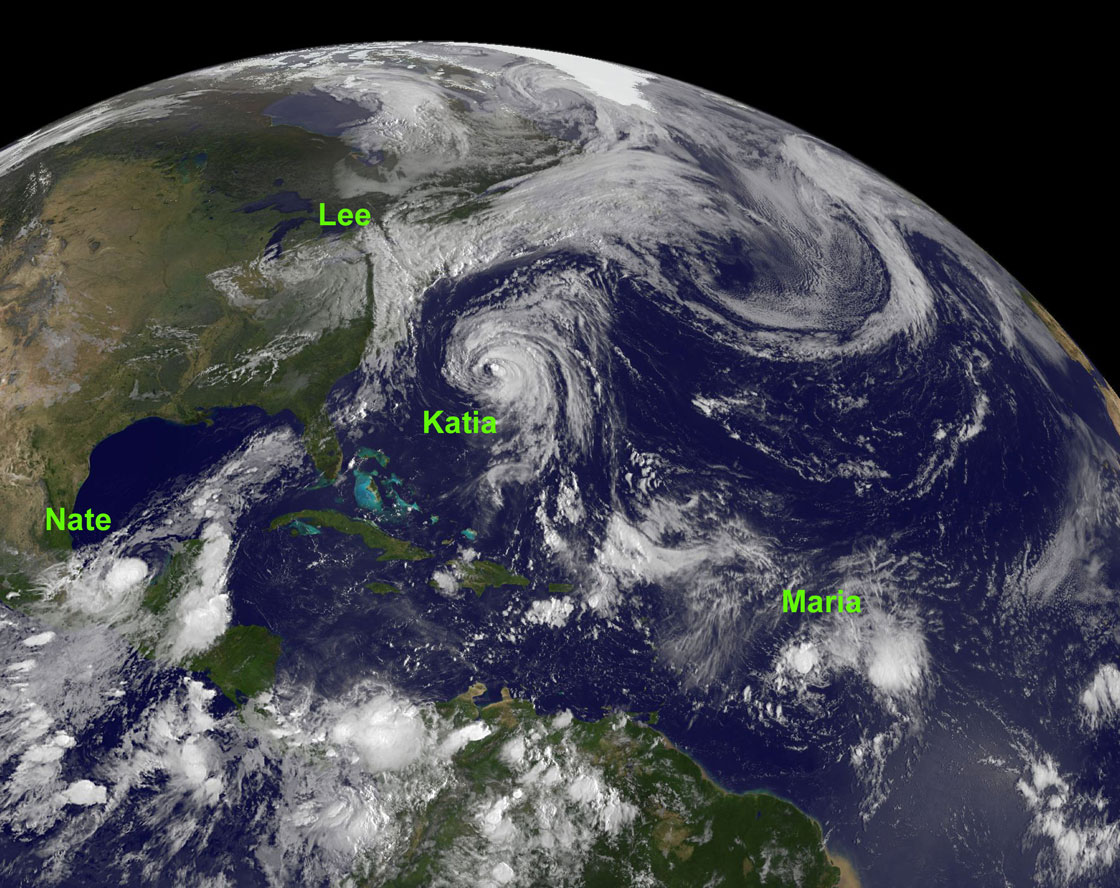TORONTO – Though the Atlantic has yet to see a hurricane, it’s still proving to be an active tropical storm season.

Before the 2013 hurricane season began, the U.S. National Oceanic and Atmospheric Administration (NOAA) forecast “an active or extremely active” hurricane season.
The Atlantic hurricane season begins on June 1 and continues to November 30.
NOAA forecast a 70 percent chance of 13 to 20 named storms of which seven to 11 could become hurricanes, including three to six major hurricanes (of Category 3 to 5).
NOAA uses the Saffir-Simpson scale to measure the intensity of hurricanes, based on wind speeds. The scale ranges from 1 to 5.
Watch: The 2012 Atlantic hurricane season in 4.5 minutes
So far this year there have been nine storms, eight of which were named and no hurricanes.
Whereas some are calling this Atlantic hurricane a “dud,” having eight storms before the middle of September is unusual.
“In an average year, the eighth named storm does not show up until Sept. 24, but did so this year on Sept. 9 (today) with Humberto,” said Dennis Feltgen of NOAA in an email to Global News.
“The first hurricane of the season shows up, on average, by August 10th, the second by August 28th and the third by September 9th. The first major hurricane (Cat 3 or higher) shows up, on average, by September 4th.
“This year did not have any hurricanes through August, and now, into early September. This is unusual but not unprecedented – as recently as September 11, 2002 (Gustav).”
Records dating back to 1851 show that there were 12 years when the first hurricane materialized on or after Sept. 9.
Since the satellite era which started in 1967, there have been two years when the first hurricane formed after Sept. 9 – Diana (Sept. 10, 1984) and Gustav (Sept. 11, 2002).
Feltgen explains why there has been a lack of hurricane activity this season.
“The atmosphere over the central and eastern tropical Atlantic Ocean has seen large areas of dry, stable and sinking air in the mid and upper atmosphere including, at times, areas of dust originating from the Saharan Region. This year’s Tropical Storms Chantal, Dorian and Erin each dissipated when they ran into this environment. What became TS Gabrielle earlier this week battled dry air intrusion before it could develop, too.”
- Premier Moe responds to Trudeau’s ‘good luck with that’ comment
- Drumheller hoping to break record for ‘largest gathering of people dressed as dinosaurs’
- As Canada’s tax deadline nears, what happens if you don’t file your return?
- Posters promoting ‘Steal From Loblaws Day’ are circulating. How did we get here?
Though we are at the midpoint of the Atlantic hurricane season, NOAA released a revised forecast in August which still calls for a 70 percent chance of an above-normal season, including 13 to 19 named storms, six to nine hurricanes, and three to five major hurricanes.
Think that seems unlikely?
“In 2001, the first hurricane didn’t form until Sept. 9,” Feltgen said. “That season ended with 15 named storms including nine hurricanes, four of which became major hurricanes.”
Already NOAA is forecasting that Tropical Storm Humberto, which is near the Cape Verde islands off the African coast, could become a hurricane by Wednesday.
Meanwhile, in the Pacific, which NOAA had predicted a 70 percent chance of being below average or average, there have been 12 storms and six hurricanes.



Comments